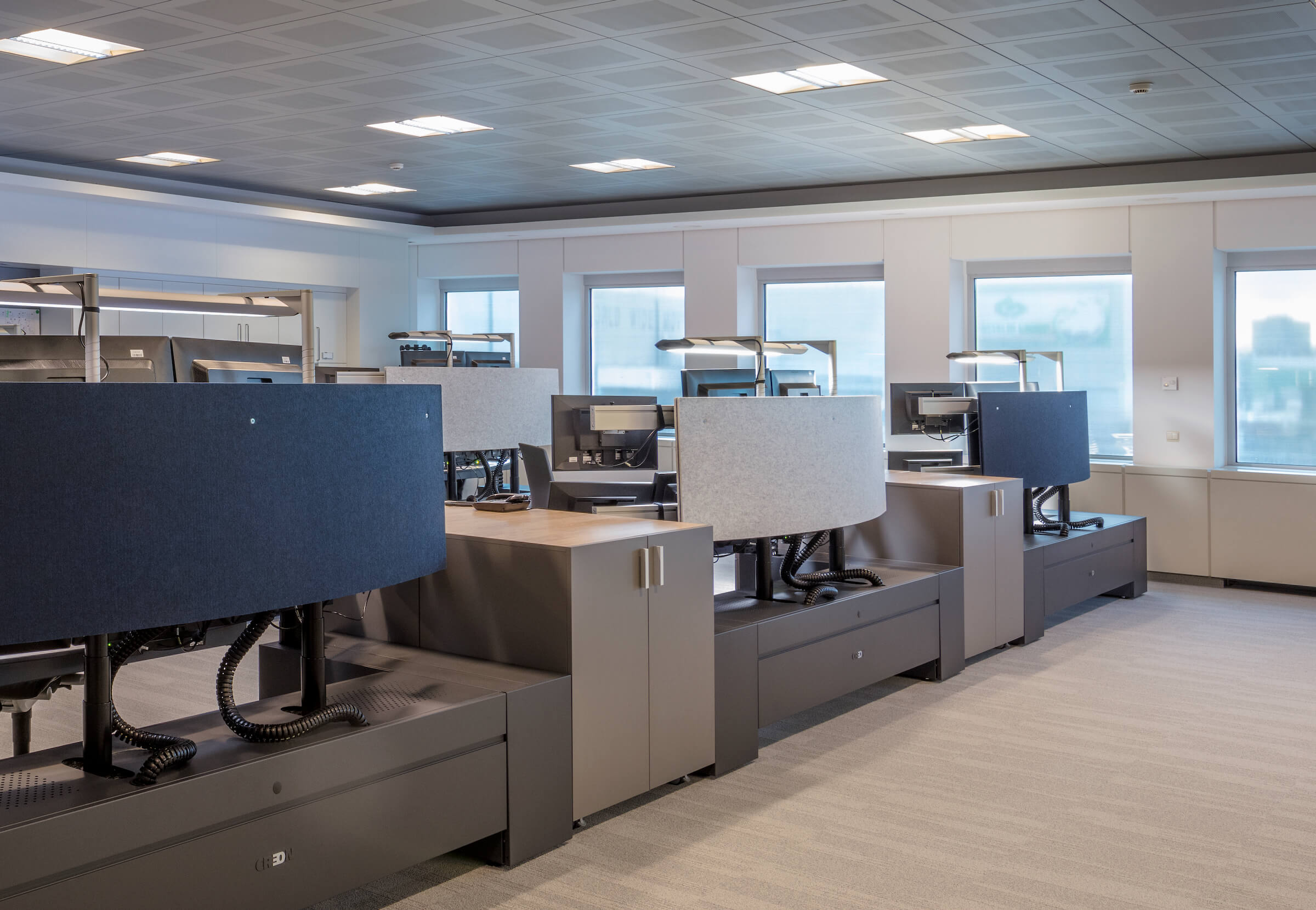In 24/7 environments such as control rooms and dispatch rooms, maintaining focus is essential. To stay in control as an operator or dispatcher, not only the ergonomic workstation matters, but also the design of the surrounding environment. At CREON, we regularly hear from professionals in the field that poor acoustics and inadequate lighting are major sources of frustration. Think of blinding spotlights, disturbing screen reflections, or background noise that disrupts communication and hinders concentration. These aren’t minor details. They’re critical elements that determine whether you can work undisturbed or are constantly distracted.
Control room lighting: essential for focus and alertness
Lighting directly affects your concentration, energy levels, and even your mood. Light that is too bright or too dim can cause fatigue, headaches, or decreased alertness. In a professional control room, lighting should support:
-
Optimal focus during both day and night shifts
-
Less eye strain
-
Greater alertness during extended monitoring sessions
-
Fewer errors at critical moments
Balanced lighting is key. By combining direct and indirect lighting, you can create an even lighting environment without harsh contrasts or glare. Natural daylight is valuable, but needs to be supplemented and controlled with adjustable lighting throughout the day to avoid reflections on screens or surfaces.
Personal factors also play a role: older employees, for instance, often require more light. That’s why human centric lighting, which supports the body’s natural circadian rhythm, is a powerful addition to any control room. This type of lighting boosts daytime alertness and enhances night shift focus by adjusting the light’s intensity and color temperature throughout the day.
Control room acoustics: clarity, calm, and collaboration
In a 24/7 work environment, good acoustics are crucial. Absolute silence isn’t the goal. What matters is controlled sound. In a well-designed control room, professionals must be able to have clear phone calls, communicate effectively with colleagues, and work with focus, all without being distracted by disruptive background noise.
Benefits of effective acoustic design:
-
Clear speech intelligibility, even with multiple conversations happening
-
Less distraction from echo or background noise
-
More calm and focus, reducing stress and fatigue
At CREON, we advise on smart acoustic solutions tailored to control room environments. For example, PET felt panels on workstations or walls absorb sound while maintaining a professional look. Other helpful additions include soft flooring, window treatments, sound-absorbing wall art, or acoustic panels. Even plants and room dividers help break sound waves while enhancing the room’s atmosphere.
Light and sound: invisible, but essential in every control room
A well-designed control room appeals to all the senses. Lighting and acoustics may be invisible, but they have a powerful effect on comfort, health, and productivity. For operators and dispatchers to truly be in control, you need an environment that supports performance through smart design choices.
Curious how your control room could be optimized for lighting and acoustics?




